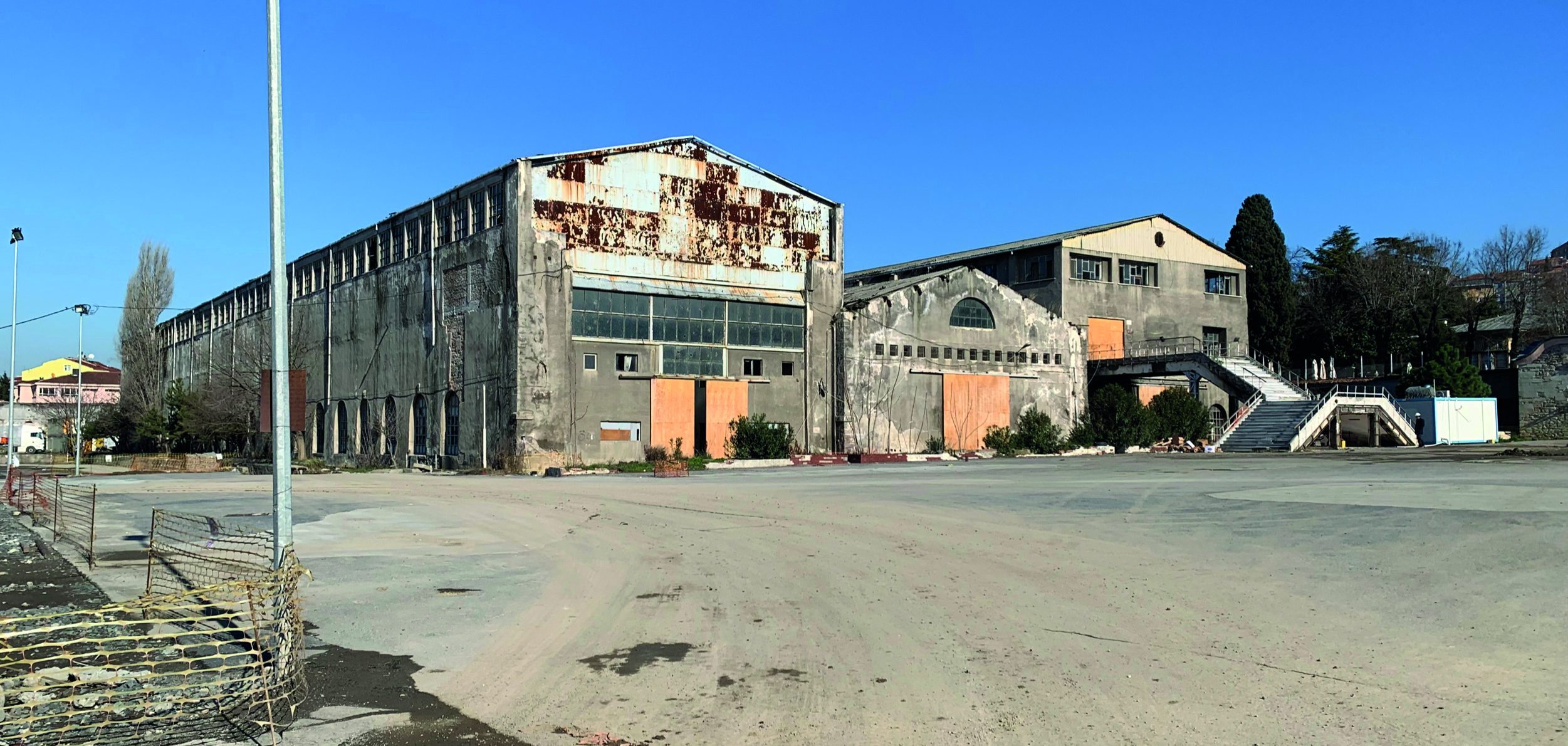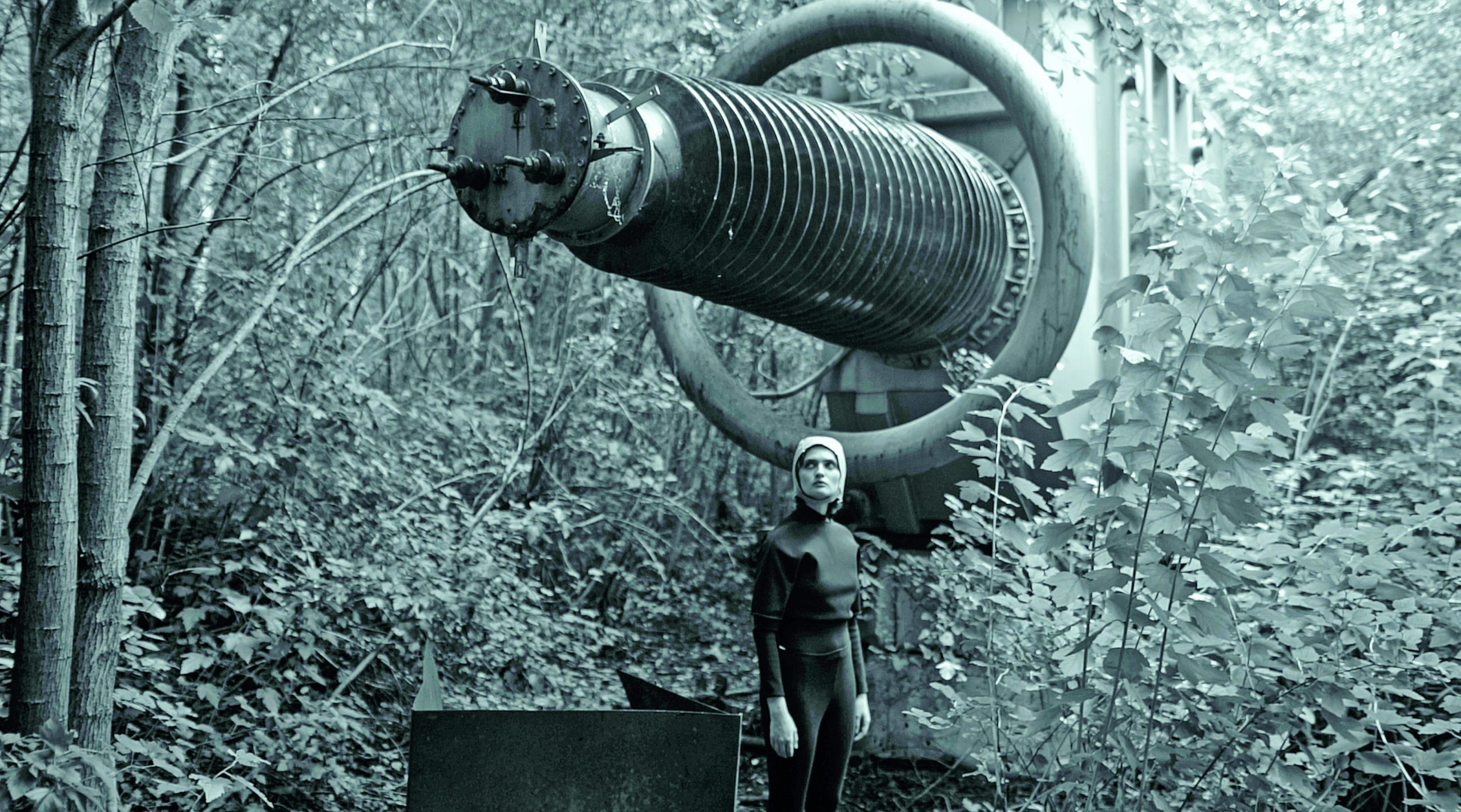Celebrating its 40th anniversary this year, the Sadberk Hanım Museum holds an extensive collection of around 20,000 items. Housing outstanding artifacts dating from prehistory to the 20th century; from Anatolian civilizations, Ottoman artists, as well as Greek and Roman civilizations, the museum is preparing to move to a new and more centralized building designed by Grimshaw Architects, with the objective of increasing public integration with the arts.
The air is crisp along the Bosphorus, ideal for a visit to the Sadberk Hanım Museum’s collection of peculiar Anatolian figurines. But will its environment be as fresh after the heritage institution’s move to the Golden Horn inlet? The objects in its collections have the potential to serve, support, and stimulate our imagination – perhaps even to reconstruct the popular imagination to better understand the feminine evolution of societies.
“Sadberk Hanım Museum holds a small number of carefully preserved, seated female figurines, accepted as among the first examples of the mother goddess dating back to the 6th millennium BC.”
The studies of archeologist and anthropologist Marija Gimbutas are a call to pay more attention to the collective memory, by following her unprecedented readings of Neolithic artefacts. Throughout her remarkable career, Gimbutas (born 1921), studied the Neolithic and Bronze Age cultures of what she called “Old Europe,” through field research that extended from Sardinia to Ukraine to Turkey’s Çatalhöyük. She emphasized the life-giving, death-giving and transformational aspects of the goddess as a unified entity, in contrast to the conventional and limited understandings of the pieces being simply fertility or Mother figures.
Sadberk Hanım Museum holds a small number of carefully preserved, seated female figurines, accepted as among the first examples of the mother goddess dating back to the 6th millennium BC. These figures are part of a wider selection of objects in the museum’s collection, which are “qualified to represent all of the Anatolian civilizations throughout all cultural periods as early as prehistory to the 20th century,” a museum spokesperson wrote in an email.
The museum collection is founded on the private collection of Sadberk Koç. While initially holding 3,000 pieces at the time of its foundation in 1980, the collection has grown into an astounding 20,000 pieces of history, thanks to an ever-expanding list of acquisitions and donations. The donation of the Hüseyin Kocabaş Collection in particular has served as a turning point for the institution’s archeology collection. The museum also holds a comprehensive Turkish and Islamic Collection, developing with the objective of presenting the main veins of Islamic art. Two departments include a wide spectrum of artifacts such as traditional costumes, embroidery, silver artifacts, porcelains, cups and vessels not only from Anatolian and Ottoman history, but also Greek and Roman civilizations.
“While initially holding 3,000 pieces at the time of its foundation in 1980, the collection has grown into an astounding 20,000 pieces of history, thanks to an ever-expanding list of acquisitions and donations.”
In his writings, archaeologist and historian Neil Asher Silberman discussed the politics of archeology, describing his field “as a tool for historical self-identification.” Considering recent critiques of the discipline of archaeology within the sphere of colonial discourse, the study’s historic tendency to re-construct history, and its role in the establishment of imperial and nationalistic narratives, I think of private institutions such as the Sadberk Hanım Collection as a part of the identity struggles brought about by modernity.
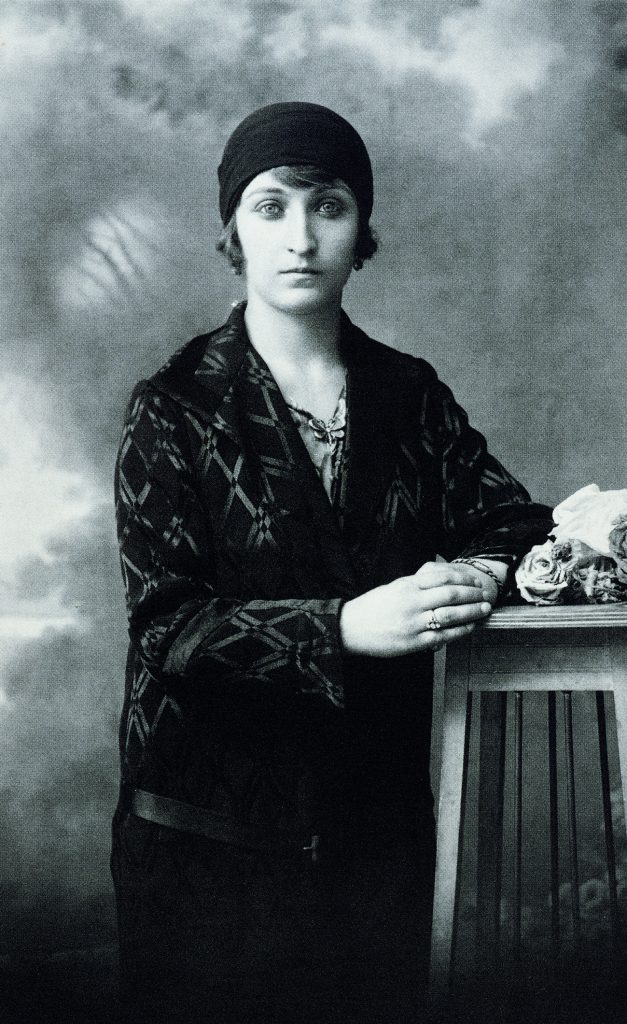
A Place of Creative Research
The Sadberk Hanım Museum is within the circuit of professional visitations by artists and scholars who also study the collections at the Istanbul Archeology Museum–founded by the pioneering curator and painter Osman Hamdi Bey– and the Museum of Turkish and Islamic Arts, both located near Sultanahmet Square. These museums are around a hundred years old, and historically had close ties with the state. Both have gone through several ruptures, remaining idle for periods of time due to political turmoil and other factors. In comparison to the collections of these institutions, the Sadberk Hanım Museum offers subtle nuances that can be noted in its repertoire.
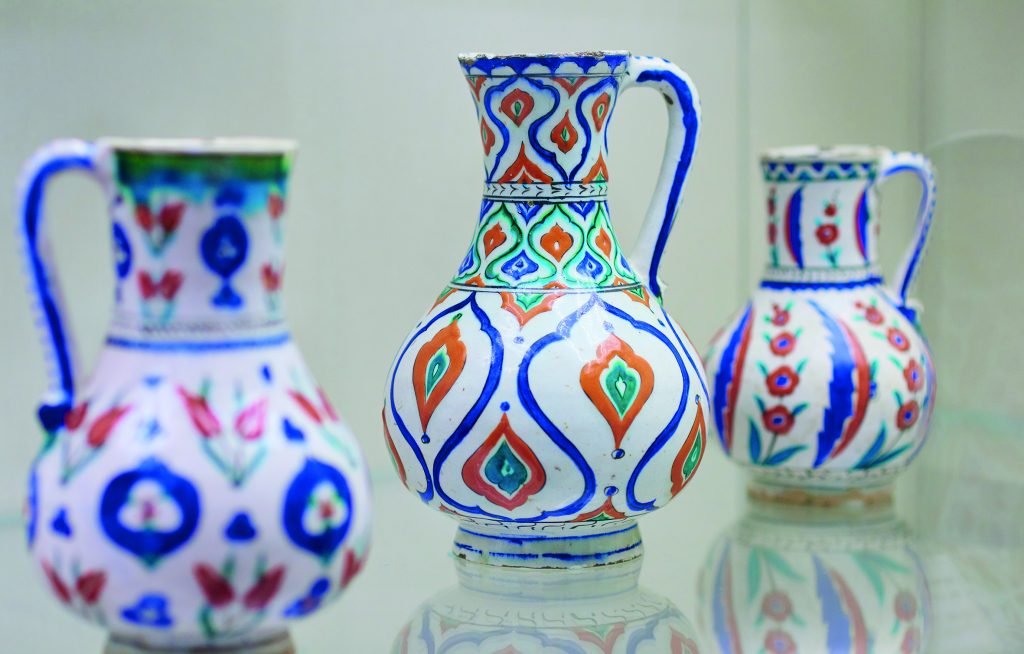
The collections of these state institutions originate from the same collection base. As extensively analyzed in art historian Wendy Shaw’s book Possessors and Possessed: Museums, Archaeology, and the Visualization of History in the Late Ottoman Empire, the collections, are informed by political, cultural and ideological guideposts; as is the case for most, if not all museums of the period. It may be considered valuable to highlight the museum institution’s political and historiographical agency.
“Private collections not only enable our understanding of the social and political context of history, but also hint at the subjectivity and identity of the creators.”
In contrast, while admiring the distinctively exquisite objects in the Sadberk Hanım Museum, one can easily relate the museum and its collecting endeavors to a very personal passion, desire, or even fear. Sevgi Gönül, the daughter of Sadberk Hanım, writes in “Sevgi’nin Diviti,” her column at Hürriyet Newspaper, how she remembers their mother-daughter excitement, walking around antique shops and flea markets in search of old, interesting items: “Catching hold of an object that nobody else has noticed, albeit hard, gave me and my mother great delight.” Sadberk Hanım’s husband, Vehbi Koç, noted in his memoirs that his wife’s wish was not to be forgotten; a desire that influenced her decision to open her collection to the public as a museum. Her wishes were fulfilled after her passing by her family. Her daughter Sevgi Gönül remained active in the foundation and l operations of the museum, and donated her own collection of Islamic calligraphy in 2003.
Private collections not only enable our understanding of the social and political context of history, but also hint at the subjectivity and identity of the creators. Sadberk Hanım was passionate about historic Ottoman women’s costumes, so much so that she herself maintained the preservation of fabrics and embroideries, which have reached our day in very good condition. With approximately 1,300 pieces of items dating between the 18th and 20th centuries, the items encompass different geographies under Ottoman rule at the time. It is in fact quite delightful to catch details and imagine their backstories in your head: What would a woman, with all the trappings of her time, value the most? What things are of the greatest importance to her? Why? What kind of conversations and thoughts did she have while wearing this gown? As I say, museums are great at igniting and opening space for the imagination.
Alongside clothing and other textiles, the Sadberk Hanım Collection holds valuable examples of Ottoman art between the 15th and 20th centuries, including ceramics, glass, metal, silver works, and porcelain artifacts. The Turkish-Islamic collection also has a prominent selection showcasing the development of İznik tiles and ceramics, as well as calligraphy and illumination artifacts. It even holds works by renowned calligraphers of their time; such as Şeyh Hamdullah, Derviş Ali, and Hafız Osman.
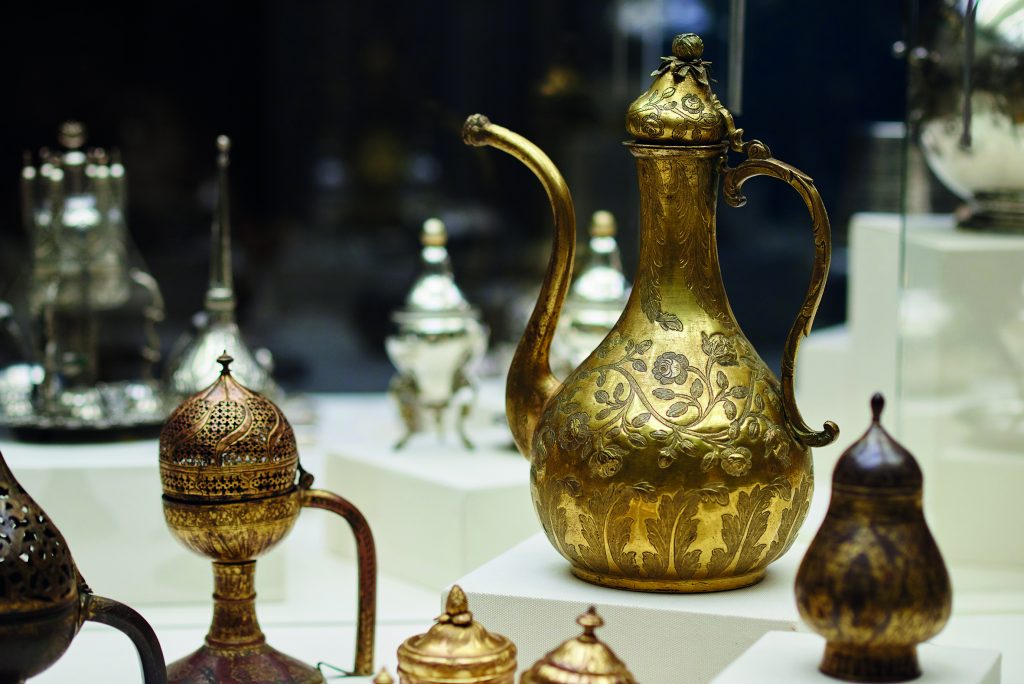
The Colonialism of Early Museology
By the 1800’s in Europe, archeology began as an amateur interest for collecting curiosities and recording ancient sites or findings. It later evolved into a discipline fully equipped with the methods of scientific research. Amateurs, scholars, and smugglers swept across unknown lands, over the territory of ancient sites, taking knowledge, images and objects back to their homes. Lands that were then under the rule of the Ottoman Empire suffered much from this new European endeavor.
In her book, Wendy M.K. Shaw narrates a comprehensive history of archeology museums in İstanbul and their collections, noting the effect of the imperial archeological enterprise on Ottoman museology. For Shaw, the museum is a site of resistance in the Ottoman context, because protecting archeological objects meant protecting borders.
“Alongside clothing and other textiles, the Sadberk Hanım Collection holds valuable examples of Ottoman art between the 15th and 20th centuries, including ceramics, glass, metal, silver works, and porcelain artifacts.”
Archeologic pursuits in the Ottoman lands, from present-day Greece, Iran, Iraq, Anatolia and other regions indicated an absence of authority, leading to the dislocation of many objects to European museums. Perhaps the most distinct example is seen at the Pergamon Museum in Berlin, a public institution based on the acquired remains (some legally and some illegally) of the Zeus Altar, originally located in Bergama, a town in İzmir Province, located in southwestern Turkey. The Ottoman Antiquities Law, updated and extended several times, illustrates the significance Ottoman authorities placed on efforts to control the mobility of objects as a way to exert power.
Apart from being a vein of resistance against Western imperial expansionist policies, the Ottoman pursuit of preserving and collecting its archeologic heritage continued in a more abstract way, utilizing archeology’s ability to rewrite history to define a cultural identity, albeit quite dispersed. This acted as both a resistance and an involvement in the narrative of Western civilization, constructed with the help of the archeology discipline. Later, It was re-utilized as a strategy by nation-states.
Towards a Future Recollection
In a time when the so-called Islamic State, or Daesh, as well as other terrorist groups have demolished ancient sites and smuggled their remains to unknown private collectors and tax-free havens; borders are being tightened in fear of refugees. Artists, activists and intellectuals increasingly question the colonial backgrounds of museums, and rethink the fragmentation of our very fragile identities. Going forward, what are the implications for private collections and public institution?
A document sent by the Sadberk Hanım Museum in response to my questions often emphasized the collection’s ability to enable visitors to follow the history of Anatolian civilizations and the Islamic Arts. The museum’s extensive library, which includes 10,000 books in print and 670 manuscripts, offers valuable material for scholarly research. With its library as well as a myriad of items, the Sadberk Hanım Museum is doing its best to enrich, deepen, and diversify discussions around history, culture and identity.
“Artists, activists and intellectuals increasingly question the colonial backgrounds of museums, and rethink the fragmentation of our very fragile identities. Going forward, what are the implications for private collections and public institution?”
The museum plans to move from its current location in Sarıyer, on the Bosphorus coast, to one of the old shipyards in Haliç, a more central location. Lale Görünür, a representative for the museum, summarizes the reasons behind this decision as an effort to integrate with all levels of society, and become a center of attraction for all. In addition, she says there are practical reasons for the move, such as suitable display and storage facility needs that the existing building does not satisfy. For the architectural design of the building and exhibition area, Grimshaw Architects and Atelier Brückner have been commissioned to do the work like the upcoming museum quarter in Galataport along the Karaköy coastline, which have been designed in line with contemporary museology practices, it will be interesting to observe the influences of these new, shiny museum buildings.
As narrated in “Statues Also Die,” Chris Marker’s short film with Alain Resnais,: “…the God who wove this flesh taught them by its turn to weave the cloth and its gesture sends back every second to the weaving of the world.” In the present day, where the weaving of history is based on fear and othering, the agency to discuss and communicate self-identities seem to be a non-negotiable necessity. Objects, although being central to a problematic means for narrative making and knowledge production, are mute. Nevertheless, they always hold the possibility to ignite imagination, a tool with which we continuously weave our futures.
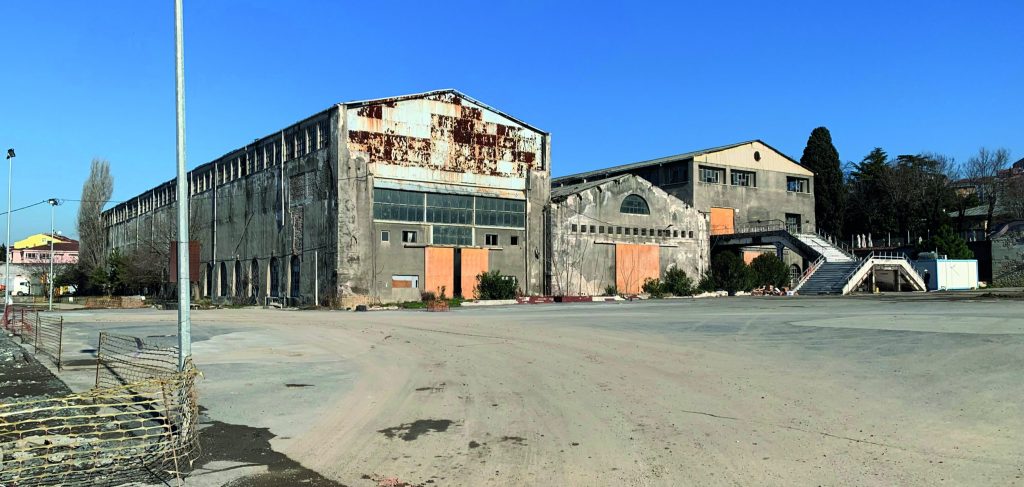
Sadberk Hanım Museum Is Moving
Vehbi Koç Foundation’s Sadberk Hanım Museum is Turkey’s first private museum exhibiting the private collection of Sadberk Koç, the wife of Vehbi Koç. The museum opened on 14 October, 1980 in a building called the Azaryan Mansion in Sarıyer-Büyükdere. Restoration projects for the Bosporus mansion were made by renowned architect Sedad Hakkı Eldem, and carried out between 1978-1980. Now planning a move to a shipyard in Istanbul’s more central Haliç location, the new building will be designed by Grimshaw Architects. It is the same firm behind the new building of the contemporary art museum, Arter in Dolapdere, a subsidiary of Vehbi Koç Foundation.





